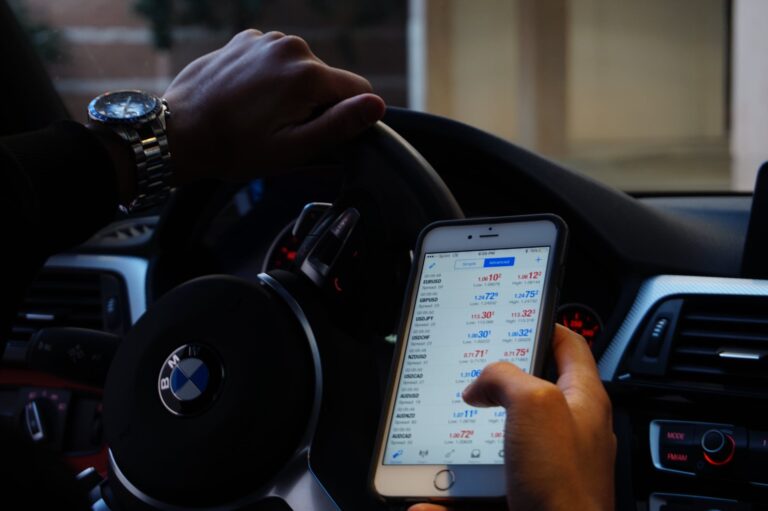The power of the internet and social media has allowed traders to monetise their skills. While this is a great thing, it also gets people to look at trading unrealistically.
The trader lifestyle has more attention than actual trading.
Because of this, people get baited into courses, bots, social trading, and signal groups by someone who lives the lifestyle they want.
So now, let’s go through the four trading avenues and see how they impact traders (especially new traders):
Trading Courses
Don’t get me wrong; courses aren’t a bad thing. Courses construct information you’d like to know in an edible format. But when it comes to trading courses, there’s a major red flag:
People who aren’t qualified to give you a course happen to be selling courses.
There is no barrier to entry for trading, and anyone can be a trader — there’s no qualification to determine someone’s trading status.
As that’s the case, the best way to verify if a trader is worthy of teaching is by judging their results. But guess what? Most traders don’t show their trading results. And if they do, it may be from a demo account.
So what’s another way traders can verify their trading ability?
Live Trading
It’s the ultimate litmus test to determine if a trader is legit. And It’s challenging to find trading course sellers who livestreams their trades.
There has been a multitude of trading courses in the last 10 years. However, over 80% of traders are still losing. That shows that the trading course industry isn’t making many traders successful — this is why verifying a course seller’s trading ability is essential.
Trading Bots
If a bot could execute a successful trading strategy while you live your life, wouldn’t that be better than trading itself? Yes, and that’s why it attracts many people. But here’s the thing:
A trading bot is only as good as the trader that coded it.
If 80% of traders don’t make money in the market, what are the chances of getting a trading bot from a trader on the 20% winner’s side? It’s improbable.
And this is why those involved with trading bots encounter these problems:
- The bot doesn’t do what you expected it to do
- Fine-tuning the bot to get the desired settings
- Drawdown the bot will tolerate
It takes practice for trading bots to work for you.
You’ll have to spend time learning how it functions, and you’ll be incentivised to when a bot has your account in drawdown — the time configuring a bot could be spent learning how to become a better trader.
Social Trading
It’s a popular trend in trading as it appeals to humans being social creatures. All types of traders can enter a forum and copy the trades from experienced traders. Copying a successful person’s trades would make you a winner, right?
Absolutely not, and here’s why:
There are critical components to a successful trader’s strategy that aren’t revealed in social trading apps. Here they are:
- Risk management
- Trade/lot size
- Trading balance
- Win percentage
These factors are vital. After all, you can copy someone’s winning trade and lose it because your trading balance is too small.
Success in social trading is deceptive
A trader with a high PnL percentage could begin their losing streak as you begin to copy them. As you’re unaware of this, you’re prone to copy another winning trader who could be on the verge of a losing streak.
Social trading requires trusting another trader through thick and thin. Worst of all, their strategy could make them a loser in the long run.
Social trading isn’t a cheat code to trading success.
It requires time and skill to copy the right traders strategically. Again, this time could be spent learning how to trade for yourself.
Signal Groups
Why trade when a successful trader can just send you trades to take? What could possibly go wrong? Well, the way you handle that trade.
If you’re new to trading, your feelings can override a trade and make you go against it. Trades in a volatile market will constantly update your trading balance, and it may be too much to take — forcing you to exit your trades.
Or, if you’re comfortable with trading and not used to the randomness of results and streaks, you’ll leave a signal group before you’re profitable.
Most signal groups are scams
Someone can get 10,000 people to join their email list.
That person then sends a long signal on a forex pair to 5,000 people and a short signal on the same pair to the other 5000.
If you’re in the 5000 that got the winning signal, you’d be more willing to trust the signal provider and pay a subscription.
That’s why you should be cautious about signal groups.
Due diligence is a must…
When it comes to trusting a source other than yourself to make trading decisions.
Don’t blindly enter into trading alternatives and expect things to be an easy ride. You’ll be confronted with adversity at some point.
For those planning to take a trading course
Make sure that:
- The trader livestreams their trades or does recordings of previous trades
- The system has a transparent process of learning how to trade their style
- You’re given realistic expectations
And for those planning to use bots, social trading apps, or signals, consider learning how to trade first.
The more you know about trading, the harder it becomes for you to fall into trading scams.


